If you’ve encountered leaks, gutter problems, or need to install rainwater tanks, you might wonder, “What is a roof plumber?” A roof plumber specializes in managing rainwater on your property, dealing with installation, repair, and maintenance of roof drainage systems. This article will explore the various roles, necessary training, the role they play in roof restoration and scenarios where a roof plumber becomes essential.
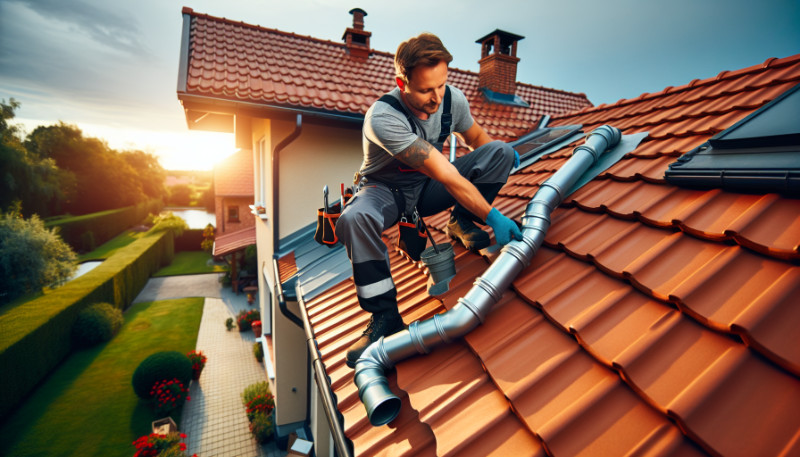
The Role of a Roof Plumber
The role of a roof plumber is specialized and essential in ensuring the effective management of water and drainage on a building’s roof. A roof plumber is responsible for the design, installation, and maintenance of systems that collect and dispose of rainwater from roofs. This includes gutters, downpipes, and drainage systems, which are crucial in preventing water accumulation and damage to the structure.
A roof plumber will work to ensure that these systems are not only functional but also comply with local building codes and regulations. Their expertise is particularly important in areas that experience heavy rainfall or have specific architectural designs that require customized water drainage solutions.
A significant part of a roof plumber’s job involves identifying and resolving problems related to roof leak repair, water overflow, and improper drainage. They conduct assessments to determine the best course of action for repairs or upgrades to existing repair roof drainage systems. In new constructions, roof plumbers collaborate with builders and architects to design and install efficient and durable rainwater disposal systems.
Additionally, roof plumbers may be involved in the installation of rainwater harvesting systems on roof structures, which collect and store rainwater for reuse. This aspect of their work contributes to sustainable building practices and water conservation efforts.
The role of a roof plumber is critical in safeguarding buildings from water-related damage, ensuring proper drainage, using water tanks and contributing to sustainable water management practices. Their skills and expertise play a pivotal role in both residential and commercial construction and maintenance.
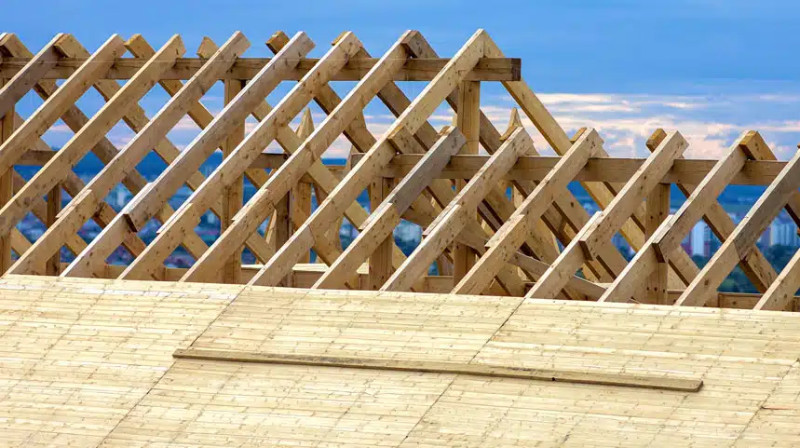
Roofing Structures and Materials
Roof plumbers play a crucial role in ensuring the structural integrity and safety of buildings through their expertise in roofing structures and materials. They are skilled professionals responsible for the installation, maintenance, and repair of roof drainage systems, which include gutters, downpipes, and flashings. These components install roof drainage systems are essential in effectively channelling rainwater away from the building, thereby protecting it from water damage.
for more information on this you can also read – how to fix gutter leaks
Roof plumbers are knowledgeable in working with various roofing materials and structures, including metal roofs, non-metallic materials like tiles and shingles, and different architectural styles, such industrial buildings such as curved and heritage buildings.
This expertise ensures that each roofing system, regardless of its complexity, receives the appropriate treatment for optimal functionality. They are also adept in installing roof flashing, which is vital for preventing leaks, especially around areas like chimneys and vents.
Safety and Training Requirements
In terms of safety and training, becoming a proficient roof plumber involves completing a comprehensive apprenticeship program, often spanning four years. This program includes practical training in skills such as cutting and joining of roof sheeting and metal, installing roofing components, and interpreting building plans.
Roof plumbers are also trained in safety measures, adhering to work health regulations and building service codes and standards. This training culminates in obtaining a Certificate III in Roof Plumbing, a necessary qualification in the construction industry.
The role of roof plumbers extends to preventive maintenance, where they conduct regular inspections to identify potential problems and provide solutions to prevent escalation into more serious issues. Their professional expertise is not only about fixing existing problems but also about advising on the best materials and techniques for specific roofing needs. This approach ensures long-term protection and efficiency for homes and buildings.
In summary, roof plumbers are essential in maintaining the health of roofs, which contributes significantly to the overall structural integrity of buildings. Their skills in handling various roofing materials, commitment to safety, and comprehensive training make them indispensable in the construction and maintenance of roofs.
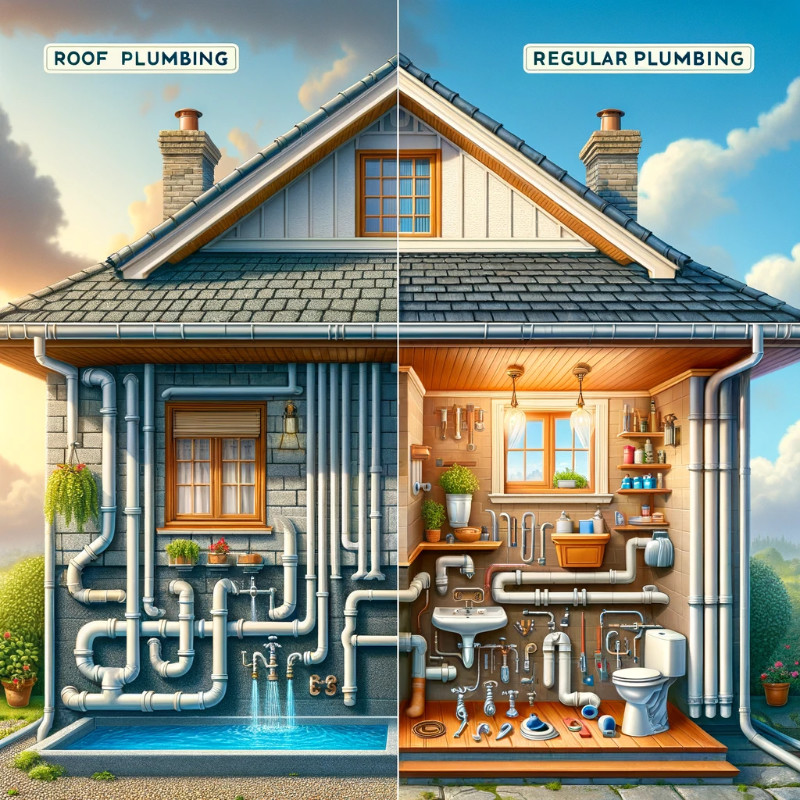
Roof Plumbing vs. Regular Plumbing
Roof plumbing and regular plumbing, while both crucial to the functionality and maintenance of a building, serve distinctly different purposes and require unique skill sets.
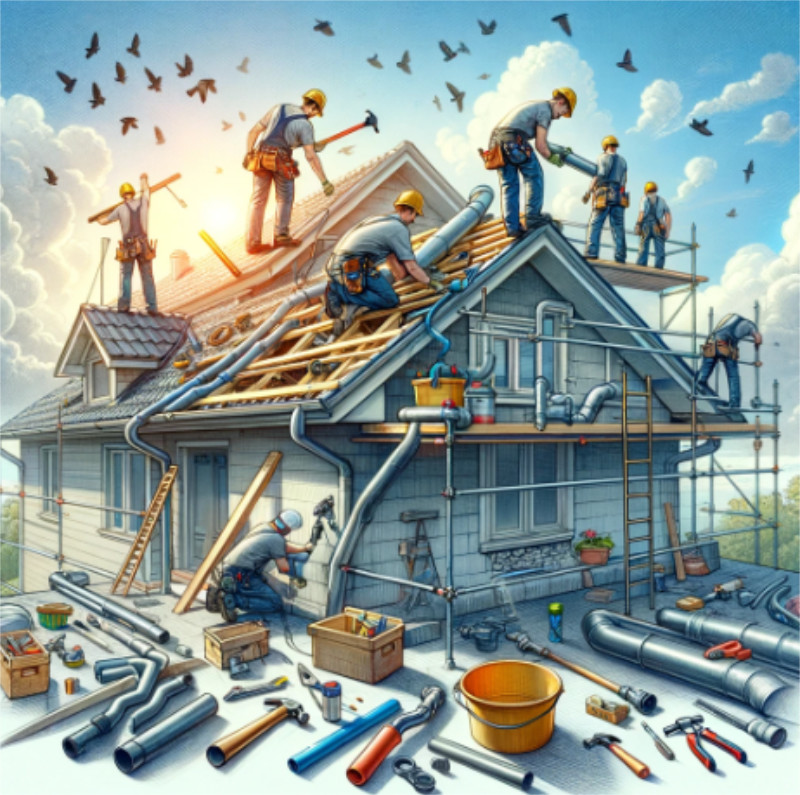
Roof Plumbing
primarily focuses on managing water drainage and disposal on the roof. It includes tasks such as installing, repairing, and maintaining gutters, downpipes, and stormwater drainage systems. Roof plumbers are skilled in ensuring that rainwater is effectively channelled away from the building to prevent water damage to the structure.
This involves understanding the specific requirements of different roof types and materials and ensuring compliance with relevant building codes and regulations. The role of a roof plumber is also crucial in preventing leaks, as they are responsible for the installation and maintenance of roof flashing, which seals the roof at joints and intersections.
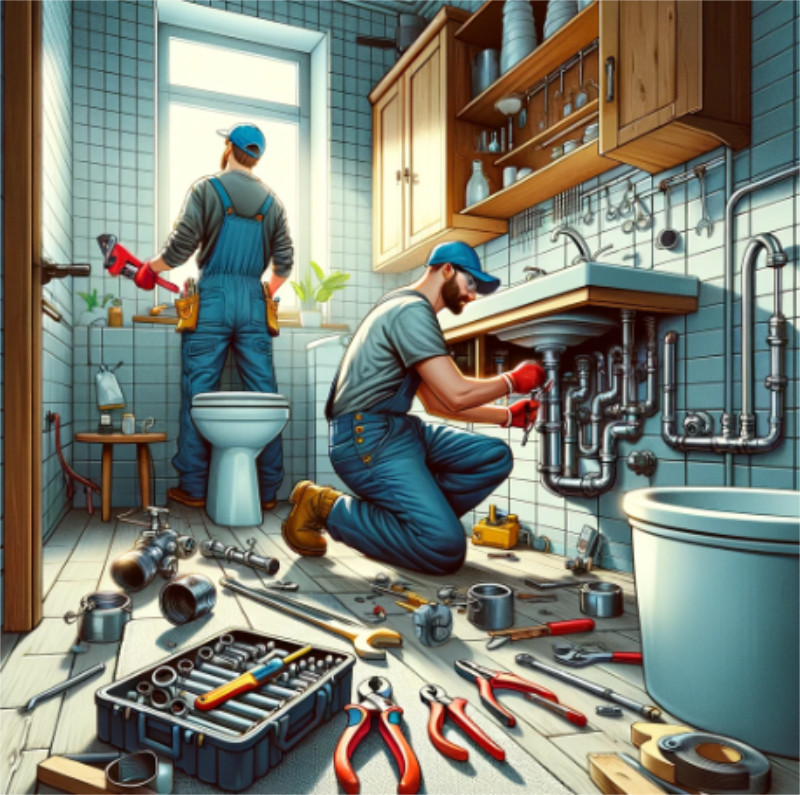
Regular Plumbing
on the other hand, deals with the installation and maintenance of systems for water supply, sanitation, and heating within a building. This includes tasks like fixing leaking taps, unblocking drains, installing and repairing water pipes, and maintaining heating systems.
Regular plumbers work on the internal plumbing system of a building, which is critical for its daily functionality. They ensure that clean water is supplied to the building and waste water is effectively removed, adhering to health and safety standards. Regular plumbing also involves emergency services to address issues like burst pipes or significant leaks.
Specialized Skills and Knowledge
The specialized skills and knowledge required for a career in metal roofing plumbing encompass a range of technical and practical abilities. These skills are honed through a combination of formal training and hands-on experience.
- Technical Drawing and Plan Interpretation: Roof plumbers must be proficient in reading and interpreting technical drawings and architectural plans. This skill is crucial for understanding the layout of plumbing systems and the specific requirements of each project.
- Installation and Repair of Roof Drainage Systems: A core aspect of roof plumbing is the installation, repair, and maintenance of roof drainage systems, which include gutters, downpipes, and stormwater systems. This requires knowledge of various materials and methods used in roofing, as well as an understanding of how to ensure effective water drainage and prevent leaks.
- Roofing Sheets and Cladding: Roof plumbers often work with roofing sheets and cladding, requiring skills in laying these materials securely and efficiently. This includes understanding how to work with different roofing materials and techniques to ensure a watertight and durable finish.
- Client Communication and Requirements Assessment: Effective communication skills are essential for roof plumbers. They need to understand and interpret the specific needs of their clients, which can vary widely depending on the project. Clear communication helps in delivering services that meet or exceed client expectations.
- Problem-Solving and Technical Expertise: Each roofing project can present unique challenges. Roof plumbers need to apply their technical knowledge and problem-solving skills to overcome these obstacles, often requiring innovative solutions tailored to each specific scenario.
- Time Management and Project Completion: Successfully completing roofing projects on time requires effective time management skills. This includes planning the work schedule, coordinating with other professionals, and ensuring timely completion of tasks without compromising on quality.
- Apprenticeship and Hands-on Experience: Typically, becoming a skilled roof plumber involves completing a 4-year apprenticeship. This training provides practical experience in using various tools and equipment, along with a comprehensive understanding of the different aspects of roof plumbing. Apprentices learn under the guidance of experienced professionals, gaining knowledge about the industry standards and best practices.
roof plumbing is a specialized field that requires a blend of technical know-how, practical skills, and effective communication. The journey to becoming a proficient roof plumber involves extensive training and hands-on experience, preparing individuals to tackle a wide range of roofing challenges.
Working Conditions and Challenges
Roof plumbers start their day early and work outdoors at great heights, often in varying weather conditions. They must deal with challenges like managing leaks on metal roofs, loose panels or fasteners, as well as rust. To handle these difficulties safely, they take precautions such as dressing suitably for the weather and staying hydrated. Moreover, Moreover, there are other benefits to it.
Identifying Roof Plumbing Issues
Timely identification of roof plumbing issues is essential to prevent extensive property damage. Ignoring these problems can lead to a variety of issues, including leaks from gutters leaking roof, and downpipes, water-related harm, growth of mould, and weakening of the building’s structure. Poor installation practices can exacerbate these problems, leading to costly repairs.
Signs of a Leaking Roof
- Water Stains on the Ceiling: This is a common indicator of a leaky roof. Water seeping through cracks or openings in the roof can cause discoloration on the ceiling.
- Mold Growth: Excess moisture from leaks can create conditions conducive to mold growth, particularly in areas like attics.
- Structural Damage: Leaks can compromise ceilings, lead to discoloured walls, and even affect the stability of the building’s foundation.
Preventative Measures
- Regular Inspections: It’s recommended to inspect your roof every 3-5 years, or at least once every second year, depending on the roofing material.
- Keep the Roof Clean and Clear: A clutter-free rooftop helps prevent damage.
- Check for Damage or Wear: Regularly inspect the surface of the roof and expansion joints for signs of deterioration.
- Record Keeping: Maintain records of all inspections and repairs to manage roof health effectively.
Proactive Maintenance Steps
- Clean Gutters Regularly: This helps prevent blockages that can lead to leaks.
- Prompt Repairs: Fix damaged shingles or tiles as soon as possible.
- Debris Removal: Keep the rooftop free from debris.
- Trim Tree Branches: If necessary, keep branches trimmed to prevent them from damaging the roof.
Hiring a Roof Plumber: What to Look For
When seeking a roof plumber, it is vital to consider several factors. Firstly, make sure that they have completed an extensive 4-year apprenticeship and possess a Certificate III in Roof Plumbing, which is necessary for working within the construction industry. It’s crucial that their insurance coverage specifically caters to the unique risks associated with roof plumbing work and provides comprehensive protection for their business operations.
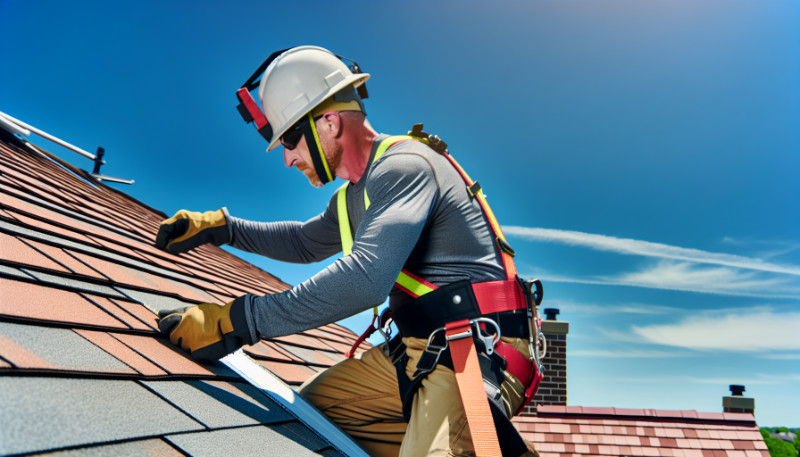
Choosing the Right Roofing Contractor
Selecting the right roofing contractor can greatly impact the level of workmanship. The amount of experience a contractor has is key, as more seasoned ones are likely to provide superior quality workmanship and possess extensive knowledge in tackling various roofing obstacles.
Besides their expertise, it is crucial to verify a roofing contractor’s licensing. This can be done by conducting an online search using either their name or license number, or by contacting the appropriate local authority responsible for issuing licenses to confirm that they have legal authorization to operate within the area.
Emergency Plumbing Services
Roof plumbers offer emergency plumbing services, on top of their regular commercial plumbing duties. They are equipped to handle urgent roof repairs and address issues with roof drainage systems for both residential and commercial properties.
Common instances that require the assistance of a roof plumber include blocked sewers or storm water drains, burst pipes (water or gas), malfunctioning hot water systems, as well as leaks in the roof itself. Their quick response time and efficient solutions highlight their versatility and expertise in handling any roofing emergencies.
The valuable service provided by these professionals extends beyond traditional indoor plumbing and tasks to ensure smooth functioning of rooftops at all times. Whether it’s for residences or businesses, contacting an experienced roof plumber can effectively solve problems related to roofs and its various components like no other profession.
Roof plumbers are skilled professionals whose expertise spans various tasks, essential for both residential and commercial properties. While their role is primarily cantered around managing rainwater on roofs, their skills and tasks are diverse and extend beyond typical plumbing work.
Common Projects in Roof Plumbing
- Installation and Repair of Gutters and Downpipes: This includes installing new gutters and downpipes, repairing or replacing old ones, and ensuring proper water flow away from the structure.
- Metal Roof Repairs: They undertake repairs of metal roofs, addressing issues like leaks, corrosion, and damage.
- Roof Flashings: Roof plumbers work on installing and repairing roof flashings, which are essential for preventing water from seeping into the building.
- Roof Inspections and Maintenance: Regular inspections and maintenance work to identify potential problems early and ensure the longevity of the roof.
- Installation of Ventilation Systems: They install ventilation systems to regulate moisture and temperature inside structures, which is crucial for preventing mold growth and maintaining air quality.
- Rainwater Tank Installation: Roof plumbers also install rainwater tanks, which are vital for collecting and storing rainwater, especially in areas prone to drought.
Differences in Residential and Commercial Roof Plumbing
- Residential Roof Plumbing: Typically involves simpler systems due to steeper roofs in homes. The focus is often on efficient rainwater management with standard gutter systems and downpipes.
- Commercial Roof Plumbing: Involves more complex systems due to the scale of commercial buildings. These often feature flat or near-flat roofs with extensive piping systems to handle larger volumes of water. The work may include dealing with complex drainage systems and larger-scale installations like industrial gutters and rainwater tanks.
Roof plumbers play a vital role in ensuring the structural integrity of both residential and commercial properties. Their expertise in efficiently managing rainwater, combined with their range of skills in various aspects of roofing, makes them indispensable in the construction and maintenance of buildings. Whether it’s a home or a large commercial complex, these roofing contractors and plumbers provide tailored solutions to meet specific needs while adhering to safety and quality standards.
Rainwater Harvesting Systems
The installation of rainwater harvesting systems is a significant aspect of roof plumbing, increasingly popular among homeowners for its environmental and cost-saving benefits. These systems capture and store rainwater from roofs, which can be used for various purposes, thereby conserving water and reducing utility bills.
Key Steps in Installing Rainwater Harvesting Systems:
- Cleaning Gutters and Roofs: Prior to installation, it’s crucial to clean both gutters and roofs thoroughly. This step ensures the removal of debris, leaves, or dirt that could contaminate the collected water.
- Installing Specialized Filters: These filters are designed to efficiently capture rainwater while filtering out contaminants. They are a critical component of the system, ensuring the quality of the collected water.
- Setting Up First Flush Diverters: First flush diverters are essential in rainwater harvesting systems. They redirect the initial flow of rainwater, which is often the most contaminated, away from storage tanks and into safe drainage areas. This helps in minimizing the initial contamination of the water stored for future use.
- Storage Tanks: Depending on the homeowner’s needs and space availability, various types of storage tanks can be installed. These tanks store the harvested rainwater for later use.
- Piping and Distribution: Proper piping is installed to direct the harvested water from the collection points to the storage tanks. This setup can vary based on the complexity of the system and the specific requirements of the property.
Benefits of Rainwater Harvesting Systems:
- Environmental Impact: These systems provide an environmentally friendly source of water, reducing dependence on municipal water supplies and promoting sustainable water use.
- Water Conservation: Rainwater harvesting helps in conserving water, which is particularly beneficial in areas facing water scarcity or drought conditions.
- Reduced Utility Costs: Utilizing harvested rainwater for non-potable purposes like irrigation, flushing toilets, and washing can significantly reduce household water bills.
The installation of rainwater harvesting systems is a complex task that requires the expertise of roof plumbers. These systems not only contribute to sustainable water management but also offer practical benefits for homeowners in terms of water conservation and cost savings. Roof plumbers play a crucial role in ensuring these systems are installed correctly and function efficiently.
Summary
To sum up, the responsibilities of a roof plumber go beyond just addressing leaks. They are often overlooked but crucial in maintaining the stability of our homes and buildings by effectively managing rainwater and preventing potential water damage. Be it installing new downpipes, repairing a leaky roof, or setting up a system for collecting rainwater, roof plumbers working their expertise and commitment greatly enhance our quality of life.

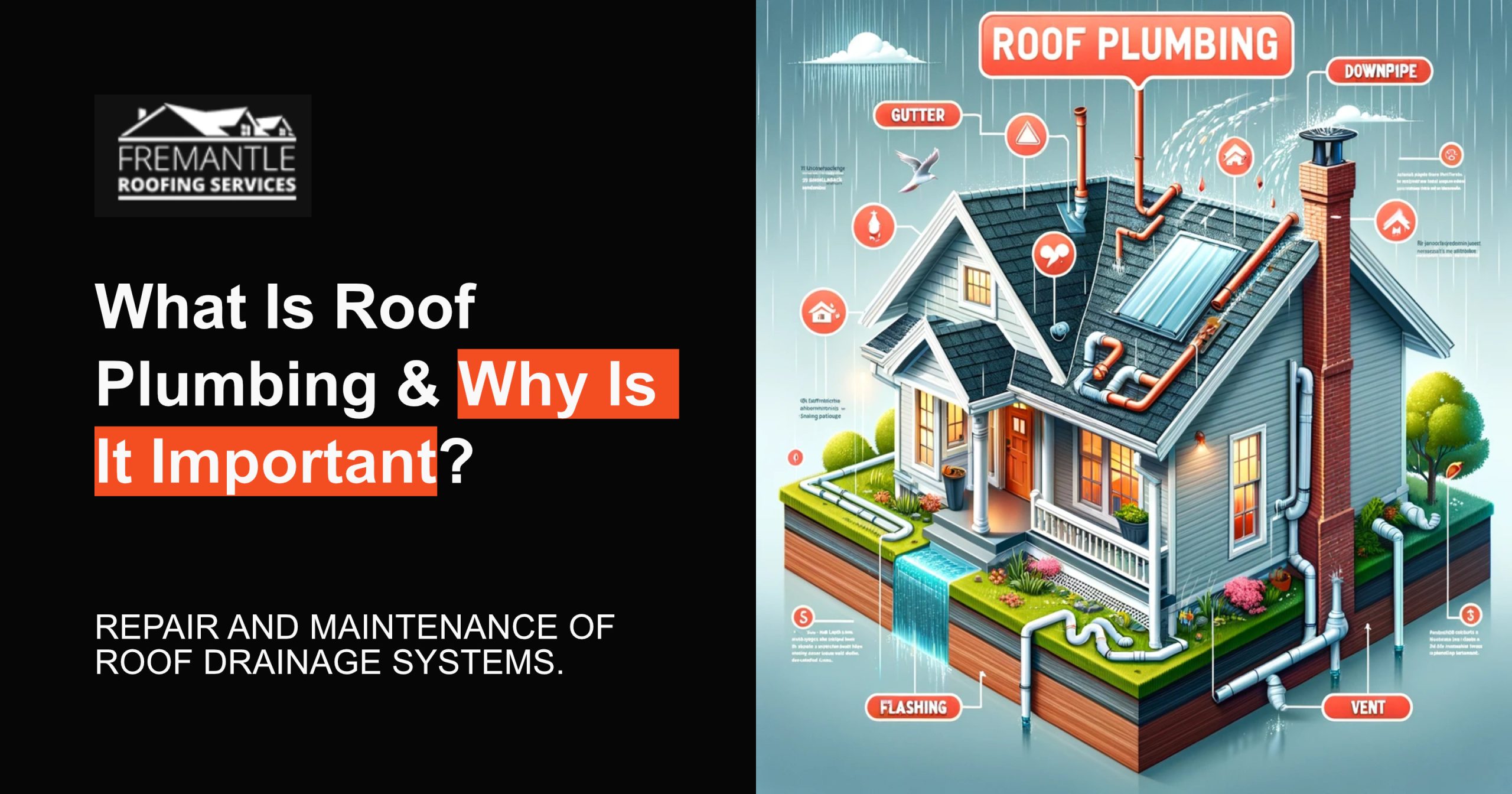
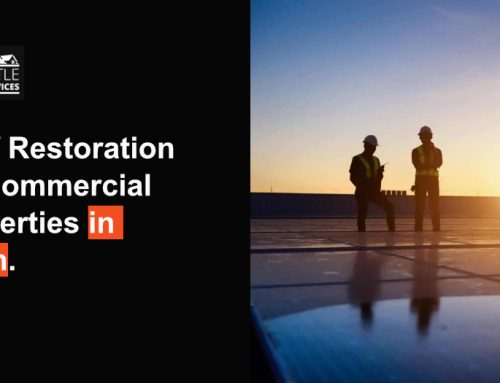

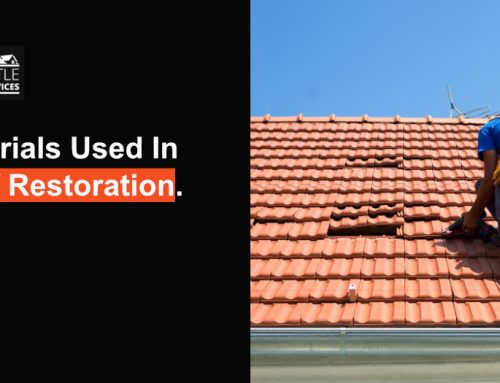
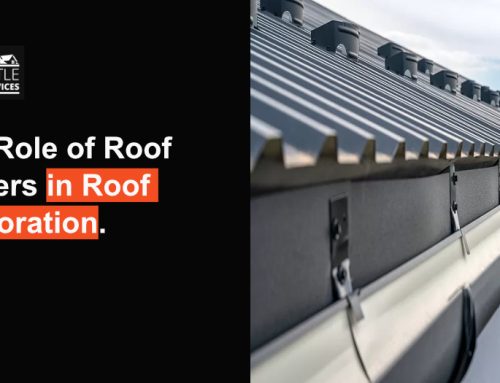
Leave A Comment